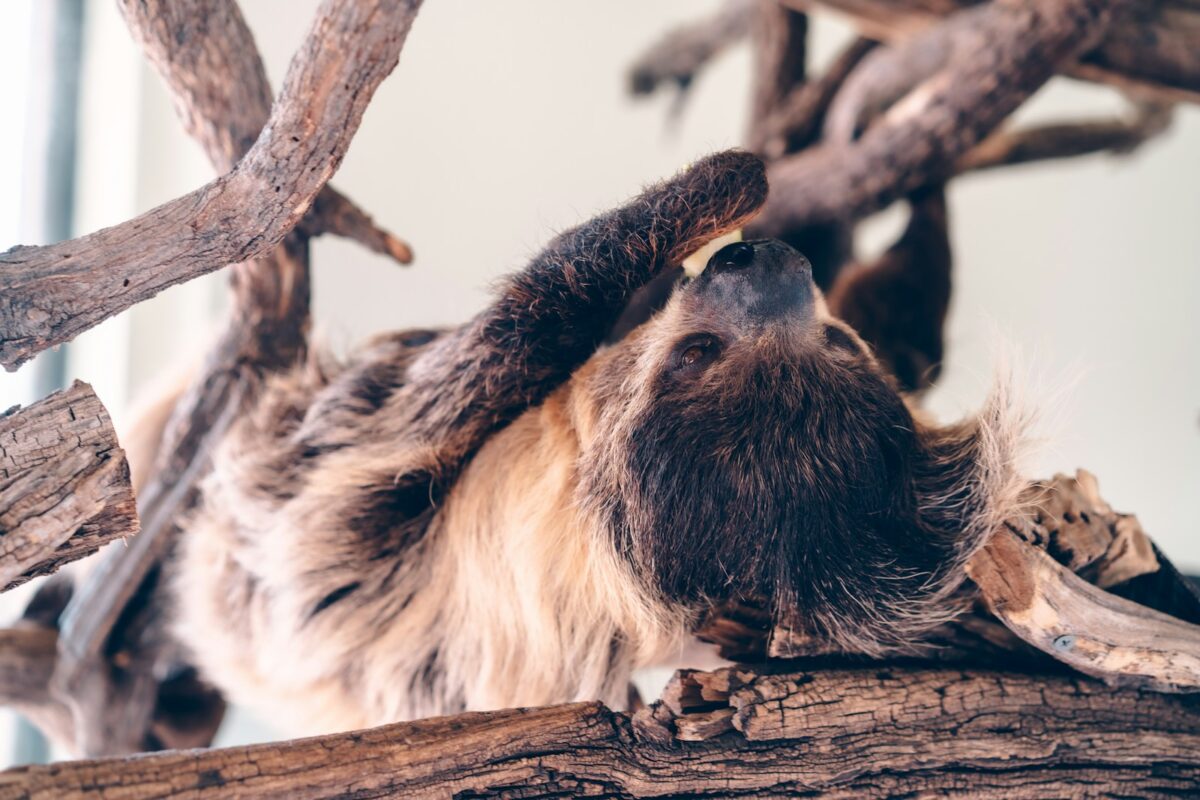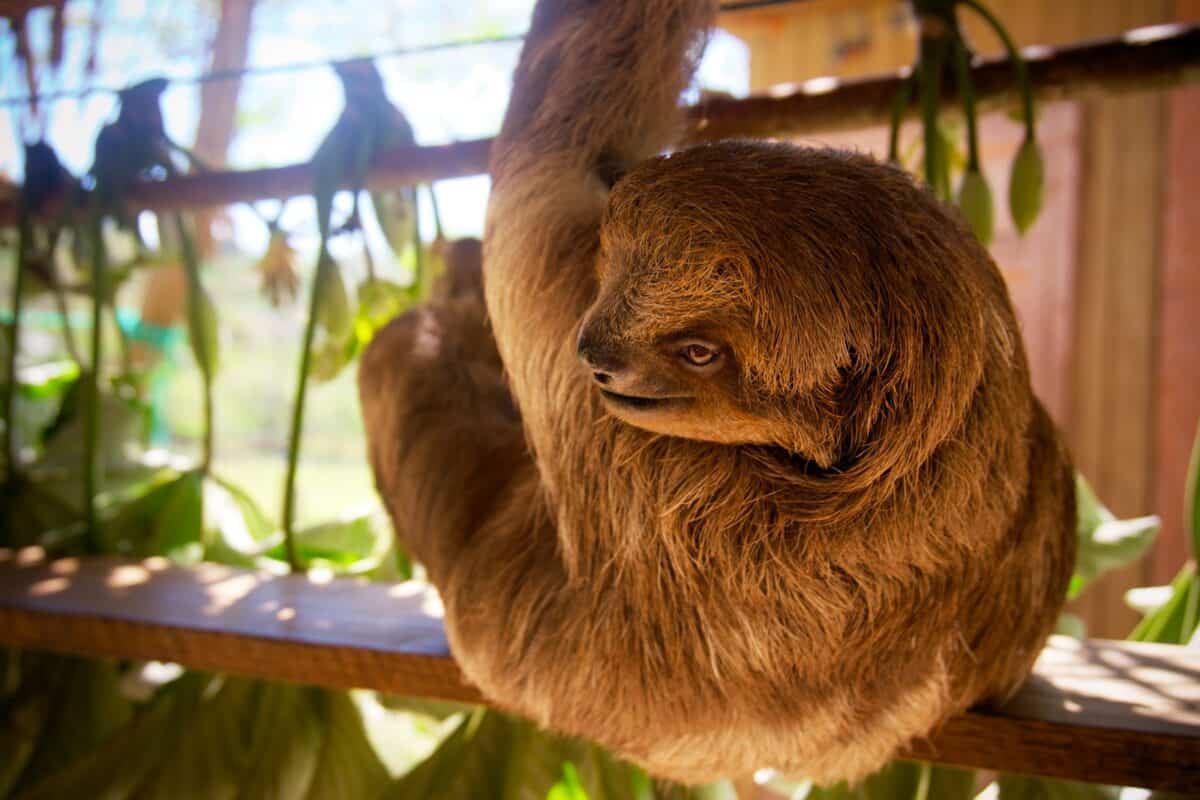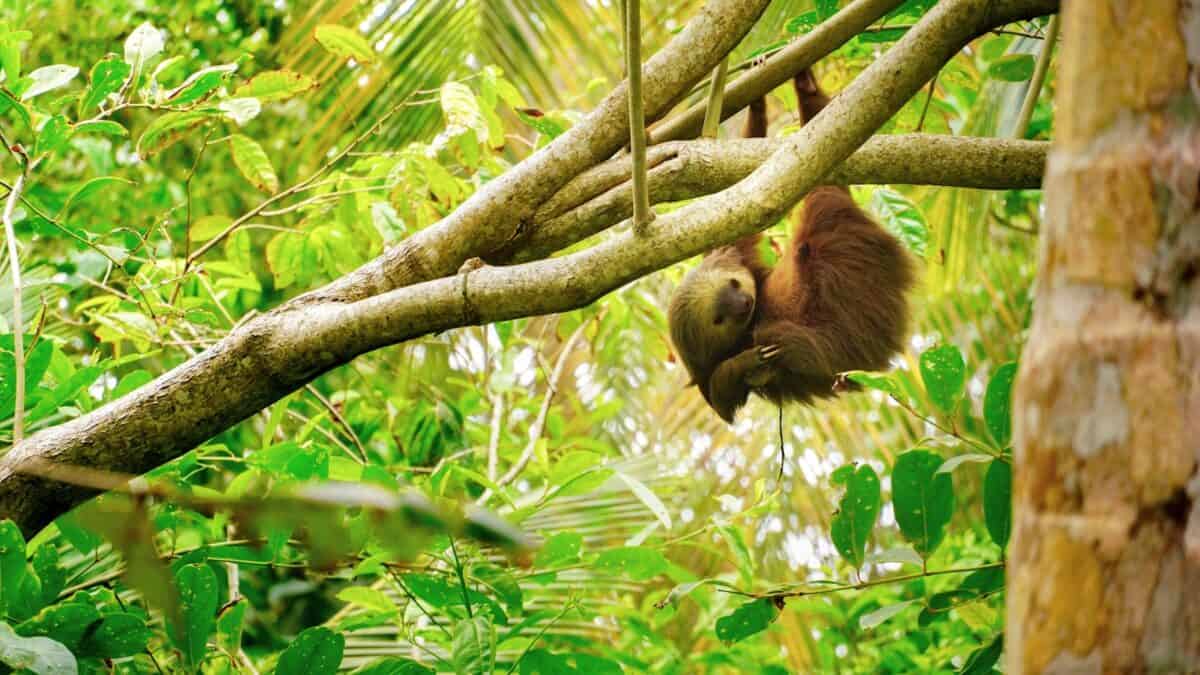Sloths are fascinating creatures that have captured the imagination of wildlife enthusiasts worldwide. These slow-moving mammals are primarily found in the tropical rainforests of Central and South America, where they spend approximately 90% of their lives hanging upside down from tree branches. This unusual lifestyle is not merely a quirky behavior but a highly specialized evolutionary adaptation that has allowed sloths to thrive in their forest habitats for millions of years.
Unlike most mammals that move horizontally across the ground, sloths have evolved to navigate their world from an inverted position. This remarkable adaptation influences virtually every aspect of their anatomy, physiology, and behavior. From their specialized digestive systems to their unique musculature and even their fur growth patterns, every feature of a sloth has been shaped by their gravity-defying lifestyle. Understanding why sloths live upside down reveals an extraordinary story of evolutionary innovation and specialized adaptation.
Anatomical Adaptations for Upside-Down Living

Sloths possess several remarkable anatomical features that make their inverted lifestyle possible. Perhaps most notably, they have specialized hook-like claws that function as natural coat hangers, allowing them to effortlessly suspend themselves from branches. These claws can reach 3-4 inches in length and feature a specialized locking mechanism that enables sloths to hang without expending muscular energy. This passive hanging system means they can even sleep while suspended without fear of falling.
Additionally, their limbs are positioned differently from most mammals, with arms significantly longer than their legs, providing greater reach for navigating between branches. Their muscles are optimized for pulling rather than pushing movements, unlike most ground-dwelling animals. Their tendons and connective tissues are extraordinarily strong while their skeletal muscles make up only about 25-30% of their body weight (compared to 40-45% in other mammals), reflecting their energy-efficient lifestyle that prioritizes hanging strength over speed or power.
Internal Organ Adaptations

Perhaps most fascinating are the internal adaptations that allow sloths to live comfortably upside down. While humans would experience severe health problems from prolonged inversion (including dangerous pressure on the brain and eyes), sloths have evolved specialized tissue attachments that anchor their internal organs to their ribcage and pelvis. These anchoring tissues prevent their organs from pressing against their lungs and diaphragm when inverted, allowing them to breathe normally despite gravity’s pull.
Their digestive system is equally specialized, with a multi-chambered stomach similar to cows that can account for nearly two-thirds of their body weight when full. Unlike other mammals whose digestive organs would press uncomfortably against their diaphragm if inverted, sloths’ digestive organs are secured in place by these tissue attachments. Even their waste elimination process has adapted to their upside-down lifestyle – sloths only defecate once weekly, typically descending to the forest floor specifically for this purpose, thus minimizing their exposure to predators.
Energy Conservation Benefits

One of the primary reasons sloths hang upside down is the remarkable energy efficiency this position provides. With the lowest metabolic rate of any mammal their size, sloths have evolved to conserve energy at every opportunity. Their inverted position takes advantage of gravity rather than fighting against it, requiring minimal muscular exertion to maintain. Studies have shown that sloths use up to 33% less energy hanging from branches than they would need to support themselves standing on top of them.
This energy conservation strategy is vital given their leaf-based diet, which provides very little nutritional value. Leaves contain minimal calories and are difficult to digest, requiring sloths to be extraordinarily efficient with their energy expenditure. By hanging upside down, they effectively “outsource” the work of supporting their body weight to their specialized claw structure rather than continuously engaging their muscles. This position-based energy conservation is so effective that sloths typically move less than 40 yards per day, spending up to 20 hours daily resting or sleeping.
Digestive Advantages of the Inverted Position

The upside-down position offers significant benefits for the sloth’s unique digestive process. Their leaf-heavy diet is notoriously difficult to digest, containing high amounts of cellulose and minimal nutrients. Sloths have evolved an extremely slow digestive system that can take up to a month to process a single meal. This prolonged digestion requires specialized bacteria to break down the tough plant material, and the inverted position may help optimize this process.
When hanging upside down, gravity assists in compacting the digestive contents in their multi-chambered stomach, potentially improving the efficiency of bacterial fermentation. Some researchers theorize that the inverted position helps distribute digestive gases more effectively through their system, preventing uncomfortable bloating that might otherwise occur with their extraordinarily slow digestion. This positioning may also help regulate the passage of food through their digestive tract at the optimal pace for maximum nutrient extraction from their low-calorie diet.
Predator Avoidance Strategy

Living upside down high in the canopy provides sloths with significant protection from predators. By remaining suspended from branches rather than sitting atop them, sloths present a less visible profile to ground-based predators and aerial hunters like harpy eagles. Their inverted position allows them to blend into their surroundings more effectively, appearing as just another hanging feature of the forest canopy rather than a potential meal.
This hanging lifestyle also minimizes the need to descend to the dangerous forest floor, where sloths are extremely vulnerable due to their slow movement. When on the ground, sloths can only drag themselves along using their front claws at speeds of less than 1 foot per minute, making them easy targets for predators like jaguars and ocelots. By living upside down in the canopy, they can travel between food sources by simply moving hand-over-hand along connected branches, rarely needing to descend to the forest floor except for defecation approximately once weekly.
Specialized Fur Growth and Rainwater Management

The inverted lifestyle of sloths has even influenced the direction of their fur growth. Unlike most mammals whose fur grows from back to belly, sloth fur grows from belly to back – the opposite direction. This reversed growth pattern allows rainwater to flow efficiently off their bodies while hanging upside down, preventing the fur from becoming waterlogged during tropical downpours. This adaptation is crucial for preventing hypothermia and reducing the weight they must support while hanging.
Their specialized fur also hosts an entire ecosystem of symbiotic organisms, including algae that gives many sloths a greenish tint, helping them camouflage among the leaves. The structure of sloth fur contains specialized grooves that collect rainwater, creating micro-habitats for algae and various insects. This relationship benefits the sloth by providing additional camouflage and potentially supplementary nutrients absorbed through their skin from the algae. This unique fur ecosystem functions optimally precisely because of the sloth’s upside-down orientation, which allows proper water flow and sunlight exposure.
Blood Circulation Adaptations

Perhaps one of the most remarkable physiological adaptations in sloths is their specialized circulatory system. In humans and most mammals, spending significant time upside down would cause blood to pool in the brain and eyes, leading to dangerous pressure increases and potential stroke. Sloths have evolved specialized valves and blood vessels that regulate blood flow regardless of their orientation, preventing the harmful effects of blood pooling.
Their circulation includes specially adapted capillary beds that provide consistent blood flow to their brain without dangerous pressure changes when inverted. Additionally, their blood pressure is naturally lower than comparably sized mammals, reducing the risk of pressure-related issues from their inverted position. These circulatory adaptations allow sloths to transition between positions without the dizziness or disorientation that humans would experience, enabling them to maintain their unusual lifestyle without cardiovascular complications.
Differences Between Two-Toed and Three-Toed Sloths

While both two-toed and three-toed sloths spend most of their lives hanging upside down, there are notable differences in how they’ve adapted to this lifestyle. Three-toed sloths (genus Bradypus) are the more specialized of the two, spending approximately 90-95% of their time inverted and moving even more slowly than their two-toed cousins. They possess an extra neck vertebra that allows them to rotate their heads 270 degrees while hanging, giving them nearly complete surveillance of their surroundings without changing position.
Two-toed sloths (genus Choloepus), while still primarily inverted, spend slightly more time in upright positions and are somewhat more active. They can move nearly three times faster than three-toed sloths when necessary. Their digestive systems are also slightly different, with two-toed sloths being somewhat less specialized, allowing them a slightly more varied diet that occasionally includes small lizards and insects in addition to leaves. Despite these differences, both types have independently evolved the core adaptations for upside-down living, demonstrating the evolutionary advantage this unusual lifestyle provides in their rainforest habitat.
Reproductive Behavior While Inverted

Even reproduction has adapted to the sloth’s inverted lifestyle. Both mating and birth typically occur while hanging upside down from branches. Female sloths give birth to a single offspring after a gestation period of 5-6 months for three-toed species and 11-12 months for two-toed species. The entire birth process happens while the mother hangs from a branch, with the newborn instinctively crawling up the mother’s belly immediately after delivery to reach safety.
Baby sloths are born with functional claws that allow them to cling to their mother’s fur from birth. They will remain attached to their mother for 6-9 months, learning to identify edible leaves and developing the necessary muscles for their hanging lifestyle. Mothers nurse their young while inverted, with specialized mammary glands positioned optimally for nursing in this position. This extended period of maternal care entirely conducted in an upside-down position highlights how thoroughly integrated this inverted lifestyle is throughout the sloth’s entire life cycle.
Evolutionary History of Sloth Inversion

The evolutionary path to the modern sloth’s inverted lifestyle is a fascinating story of adaptation. Modern tree sloths evolved from much larger ground-dwelling ancestors, some of which were the size of elephants during the Pleistocene epoch. These giant ground sloths, which went extinct approximately 10,000 years ago, were formidable creatures that walked on all fours or occasionally stood upright on powerful hind legs. The transition from these massive ground-dwellers to today’s specialized tree-hangers represents one of the most dramatic evolutionary shifts in mammalian history.
Scientists believe that increasing competition for ground-based food resources and predation pressures gradually drove smaller sloth species into the trees, where they developed adaptations for arboreal living. Over millions of years, natural selection favored those individuals with adaptations that allowed for more efficient hanging and movement among branches, gradually resulting in the specialized inverted lifestyle we observe today. Interestingly, modern two-toed and three-toed sloths evolved their similar hanging adaptations independently through convergent evolution, as they are not closely related, highlighting how effective this unusual lifestyle is for their ecological niche.
Conclusion: Masters of Upside-Down Living

The sloth’s inverted lifestyle represents one of nature’s most fascinating examples of specialized adaptation. Far from being merely an unusual behavioral quirk, hanging upside down is an integrated lifestyle strategy that touches every aspect of sloth biology, from their organ placement to their fur growth direction. This position-based adaptation has allowed sloths to carve out a successful ecological niche in tropical forests, efficiently exploiting a food source—leaves—that few other mammals can survive on while minimizing energy expenditure and predation risk.
In many ways, sloths challenge our preconceptions about what constitutes successful adaptation. Rather than evolving for speed, strength, or intelligence, sloths have perfected the art of energy conservation and specialization. Their seemingly bizarre upside-down existence is actually a masterpiece of evolutionary adaptation, allowing these remarkable creatures to thrive for millions of years in their forest habitats. As we continue to study these unusual mammals, they remind us that in nature, success doesn’t always come from being the fastest or strongest—sometimes, it comes from finding a unique way of life that others cannot imitate, even if that means spending life hanging upside down.
- Why Sloths Spend Most of Their Lives Hanging Upside Down - August 13, 2025
- Meet the World’s Largest Wolf Ever Recorded – Its Size is Unreal! - August 13, 2025
- Why You’re More Likely to See Bald Eagles in Winter - August 13, 2025

